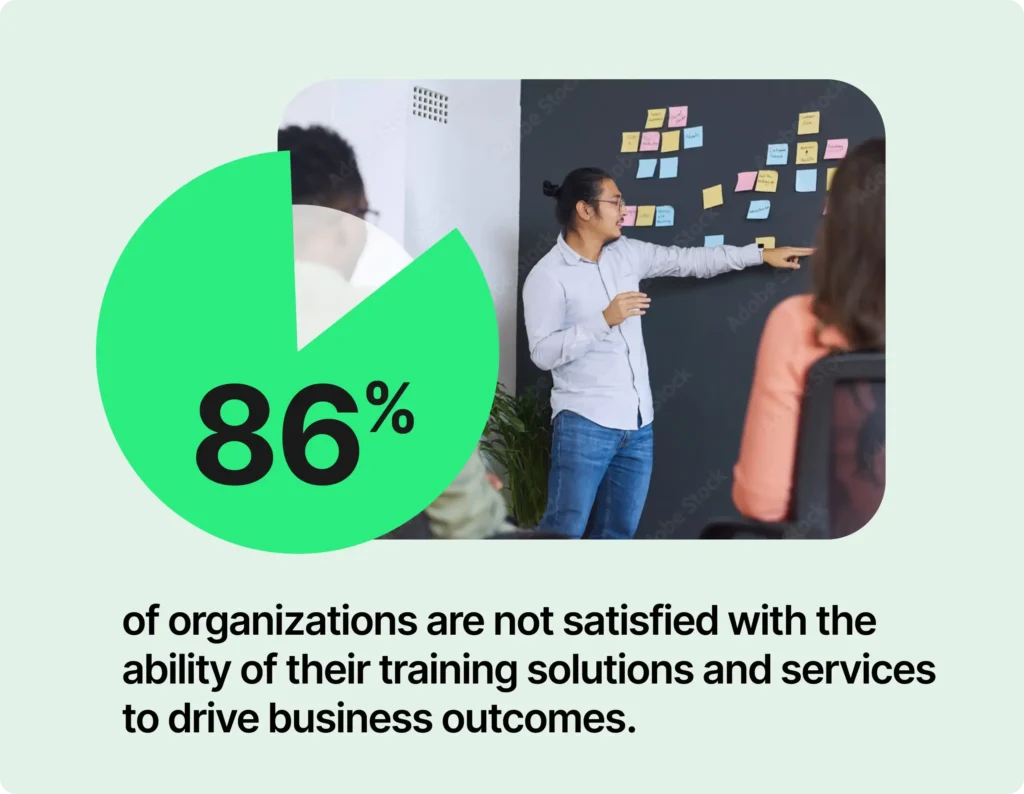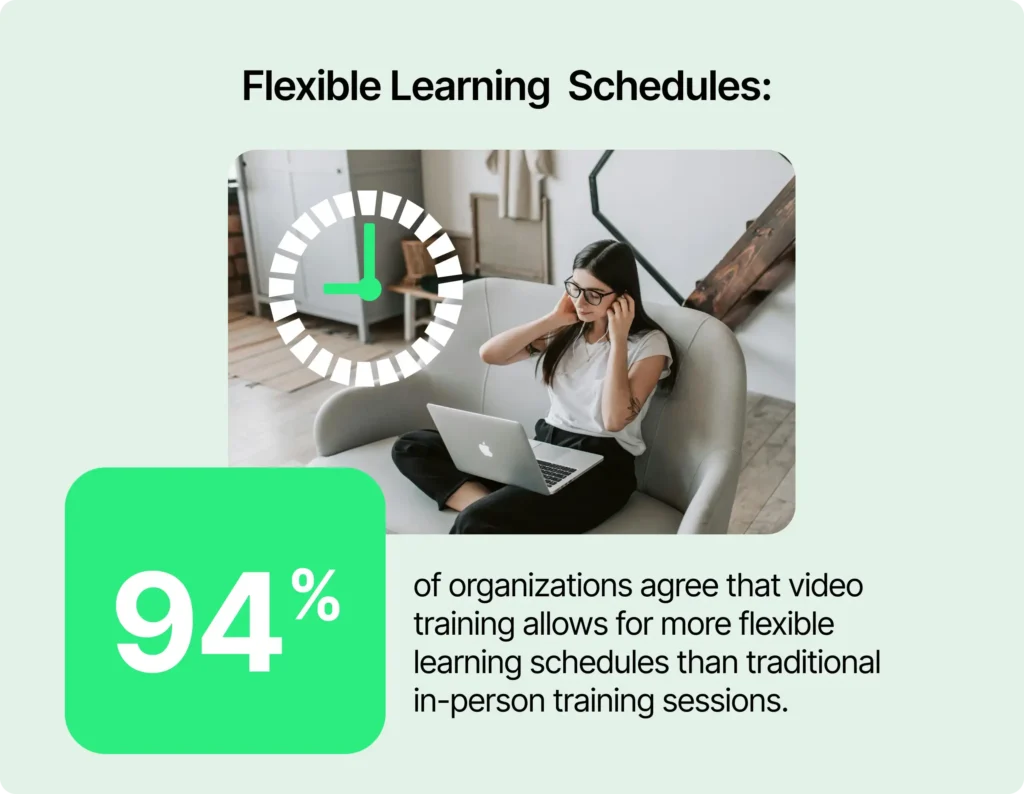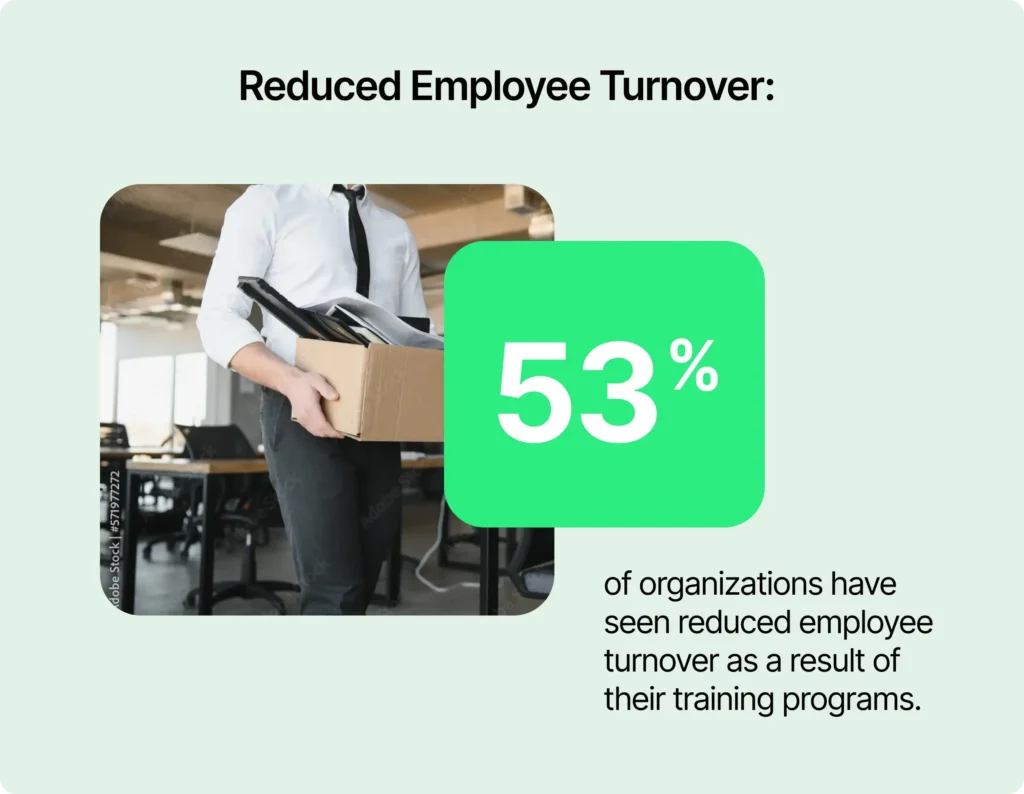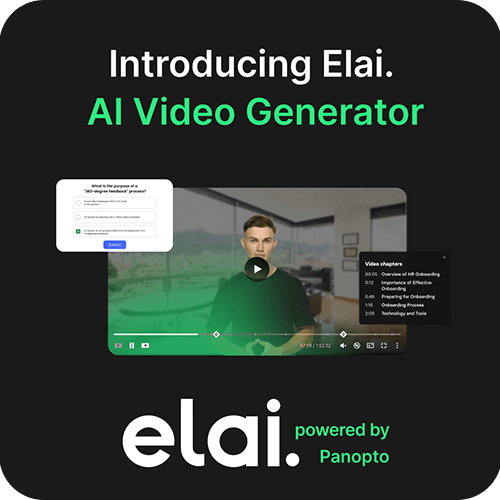Schöpfen Sie das Potenzial Ihres Unternehmens: Warum Video der Eckpfeiler Ihrer Schulungsstrategie sein sollten
- Schulung
Schöpfen Sie das Potenzial Ihres Unternehmens: Warum Video der Eckpfeiler Ihrer Schulungsstrategie sein sollten

Die Aus- und Weiterbildung der Belegschaft war schon immer ein Eckpfeiler des organisatorischen Erfolgs, aber die heutige dynamische Geschäftslandschaft bringt neue Komplexitäten mit sich. Veraltete Schulungsmethoden und verstreute Ressourcen können den Fortschritt behindern, so dass ein effektiver Wissenstransfer wichtiger denn je ist. Als bewährter Bestandteil von Lernen und Entwicklung bietet videobasiertes Training Unternehmen weiterhin eine zuverlässige und wirkungsvolle Möglichkeit, Mitarbeiter einzubinden und eine konsistente, skalierbare Ausbildung bereitzustellen.
Ein kürzlich veröffentlichter Bericht von Panopto, dem führenden Anbieter von Video-Lernplattformen, beleuchtet die Rolle von Video beim organisatorischen Lernen. Die Ergebnisse basieren auf Erkenntnissen aus globalen Unternehmen und liefern ein überzeugendes Argument dafür, warum Video im Mittelpunkt der Lernstrategie Ihres Unternehmens stehen sollte. Hier ist, was Sie wissen müssen:
Die Herausforderungen beim traditionellen Training
Beim Lernen geht es grundsätzlich darum, Wissen zu teilen. Wenn dieses Wissen mit den einzigartigen Prozessen, Protokollen und Standards einer Organisation verknüpft ist, werden die Mitarbeiter zur primären Fachquelle. Daraus ergeben sich eine Reihe von Herausforderungen: Wie kann dieses Wissen effektiv erfasst werden? Wie kann es validiert werden? Wo soll es gespeichert werden? Dies sind nur einige der kritischen Fragen, mit denen sich Organisationen wie das Kernenergieunternehmen Framatome auseinandersetzen müssen, wenn sie die komplexe Aufgabe der Bewahrung institutionellen Wissens angehen.
Trotz erheblicher Investitionen in die Mitarbeiterentwicklung sind 86 % der Unternehmen weiterhin mit ihren Schulungsprogrammen unzufrieden. Warum?
- Verstreute Tools: Mitarbeiter jonglieren oft mit mehreren Plattformen, was es schwierig macht, relevante Informationen schnell zu finden.
- Veralteter Inhalt: Über die Hälfte der Unternehmen hat Probleme damit, ihre Schulungsmaterialien aktuell und ansprechend zu halten, was zu einer geringeren Bindung und Produktivität führt.
- Produktivitätsverlust: Mitarbeiter verbringen bis zu sechs Stunden pro Woche mit der Suche nach Informationen und verschwenden so wertvolle Zeit.
Traditionelle Ansätze halten nicht mit den Bedürfnissen der heutigen Lernenden Schritt, aber videobasierte Schulungen bieten eine Lösung.

Warum VideoTraining funktioniert
Video ist das ideale Medium zur Erfassung, Systematisierung und Weitergabe institutionellen Wissens. Seine Vielseitigkeit zeigt sich in unterschiedlichsten Anwendungen, von der Demonstration hochtechnischer, praktischer Fertigkeiten – wie der sicheren Bedienung schwerer Geräte – bis hin zur Vermittlung differenzierter zwischenmenschlicher Fähigkeiten, wie der Beherrschung der Verhandlungskunst. Aus diesem Grund stellt der Hersteller Ingersoll Rand beispielsweise Video in den Mittelpunkt seiner Lern- und Entwicklungs- sowie Kommunikationsstrategien.
Und die Daten sprechen für sich: Unternehmen, die Video einsetzen, berichten von deutlich besseren Ergebnissen auf breiter Front. Hier ist der Grund:
- Ausrichtung an modernen Lernpräferenzen
Das Aufkommen von Microlearning – kurzen, zielgerichteten Lektionen – eignet sich perfekt für Videoformate. Mitarbeiter bevorzugen mundgerechte Inhalte, die leicht verdaulich sind, und Videos bieten genau das. - Flexibilität und Zugänglichkeit
Video ermöglicht On-Demand-Lernen, sodass Mitarbeiter jederzeit und überall auf Schulungen zugreifen können. Tatsächlich sind 94% der Unternehmen der Meinung, dass Video flexible Lernpläne fördert und damit ideal für verteilte und Tele-/Fern-/Remote-Teams geeignet ist. - Verbessertes Engagement und Kundenbindung
VideoInhalte sind von Natur aus ansprechender als textbasierte oder persönliche Schulungen. Die Mitarbeiter können die Materialien bei Bedarf erneut aufrufen, um die Bindung zu verbessern und sicherzustellen, dass die Fähigkeiten erhalten bleiben. - Effizienz und Kosteneinsparungen
Video beseitigt logistische Hürden wie Terminplanung und Reisen und spart Zeit und Geld. Über 77 % der Unternehmen geben an, dass die durch Video erzielten Kosteneinsparungen die anfängliche Investition rechtfertigen.

Video Training in Aktion
Unternehmen, die videobasierte Schulungen nutzen, sehen greifbare Vorteile:
- Mitarbeiterleistung: Video ermöglicht es den Mitarbeitern, schnell die richtigen Informationen zu finden und so die Produktivität zu steigern.
- Reduzierte Fluktuation: Unternehmen, die Videos für Schulungen einsetzen, berichten von einem Rückgang der Mitarbeiterfluktuation um 53 %.
- Verbesserte betriebliche Effizienz: Mit den richtigen Tools verbringen Mitarbeiter weniger Zeit mit der Suche nach Informationen und mehr Zeit mit der Beiträge.
Von Onboarding und Compliance bis hin zu Führungskräfteentwicklung und technischem Training verändert Video die Art und Weise, wie Unternehmen ihre Teams auf den Erfolg vorbereiten.
Aufbau einer Video-zentrierten Schulungsstrategie
Um das volle Potenzial von Videoschulungen auszuschöpfen, müssen Unternehmen einen strategischen Ansatz verfolgen:
- Zentralisieren Sie Ihre Inhalte: Stellen Sie sicher, dass Schulungsmaterialien in einer leicht durchsuchbaren Bibliothek gespeichert werden.
- Investieren Sie in hochwertige Inhalte: Ansprechende und aktuelle Videos sorgen für bessere Ergebnisse und höhere Zufriedenheit.
- Nutzen Sie KI-gestützte Tools: Erweiterte Funktionen wie KI-Suche und Analytik machen das Training noch effektiver.
- Nutzen Sie eine mobilfreundliche Plattform: Erreichen Sie Ihre Mitarbeiter mit Mobile-First-Lernoptionen, wo immer sie sich befinden.
[Learn More: How to Use an AI Training Video Generator]

Die Zukunft ist Video
Die moderne Belegschaft verlangt nach Lösungen, die dynamisch, flexibel und benutzerfreundlich sind. Video erfüllen nicht nur diese Anforderungen, sondern verschaffen Unternehmen auch die Möglichkeit, sich in einem zunehmend wettbewerbsorientierten Umfeld von der Masse abzuheben. Durch Investitionen in Videos können Sie das Engagement Ihrer Mitarbeiter steigern, die Bindung verbessern und Ihre Geschäftsziele erreichen.
Der Bericht von Panopto zur Mitarbeiterschulung macht es deutlich: Video ist nicht nur ein Werkzeug – es ist eine strategische Notwendigkeit. Sind Sie bereit zu sehen, welche Auswirkungen es auf Ihr Unternehmen haben kann? Kontaktieren Sie uns noch heute, um zu erfahren, wie die hochmoderne Video-Plattform von PanoptoIhre Schulungsprogramme revolutionieren kann.
Aktuelle Neuigkeiten
-

- Präsentationen
How to Use a PowerPoint Screen Recorder to Capture Presentations on Video
A PowerPoint screen recorder has become an indispensable tool for professionals who want to transform static presentations into dynamic, shareable video experiences. Gone are the days when compelling presentations were confined to conference rooms or live webinars. Today’s knowledge workers need versatile ways to capture, share, and preserve their insights. Whether you’re an educator bridging…
How to Use a PowerPoint Screen Recorder to Capture Presentations on Video
-

- Video-Lernen
Transformation von High-Potential-Entwicklungsprogrammen mit Video-basierten Lernlösungen
High-potential development programs are the cornerstone of sustainable organizational growth—yet most fail to deliver on their promise, leaving future leaders frustrated and companies vulnerable to talent drain. The conventional approach of sporadic workshops, limited mentorship, and one-size-fits-all training continues to produce disappointing results: knowledge gaps, inconsistent skill development, and ultimately, the departure of your most…
Transformation von High-Potential-Entwicklungsprogrammen mit Video-basierten Lernlösungen
-

- Onboarding
Onboarding-Strategien und Leitfaden für den Vertrieb
Sales onboarding forms the critical foundation of your entire revenue generation strategy. It’s more than just showing new hires where the coffee machine is and handing them a product catalog. Sales onboarding is all about transforming promising talent into confident, knowledgeable revenue drivers as quickly and effectively as possible. What separates world-class sales organizations from…
Onboarding-Strategien und Leitfaden für den Vertrieb



